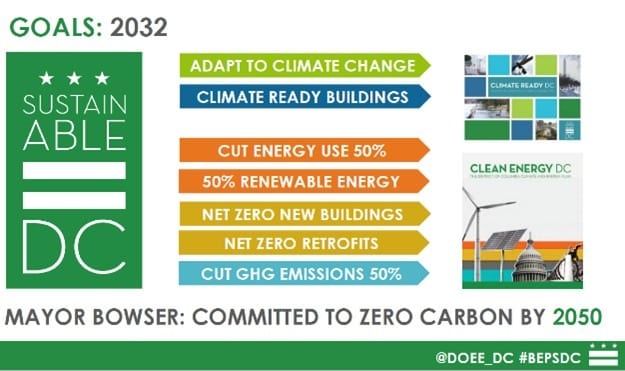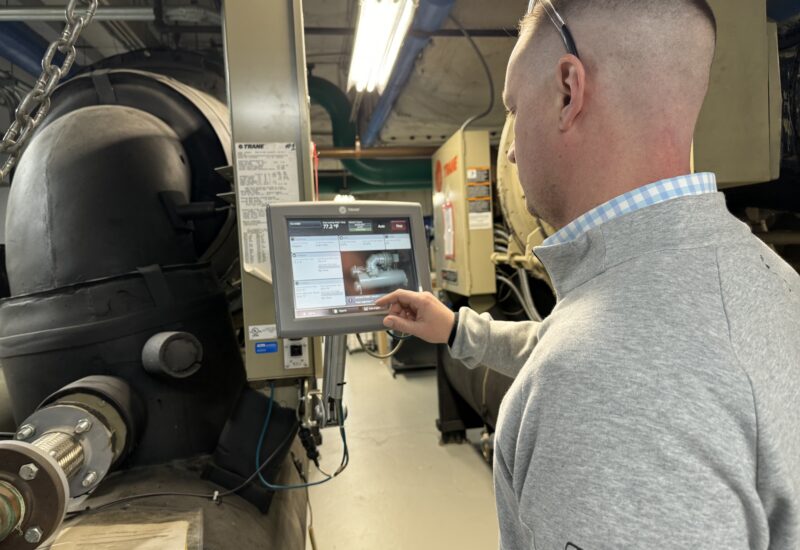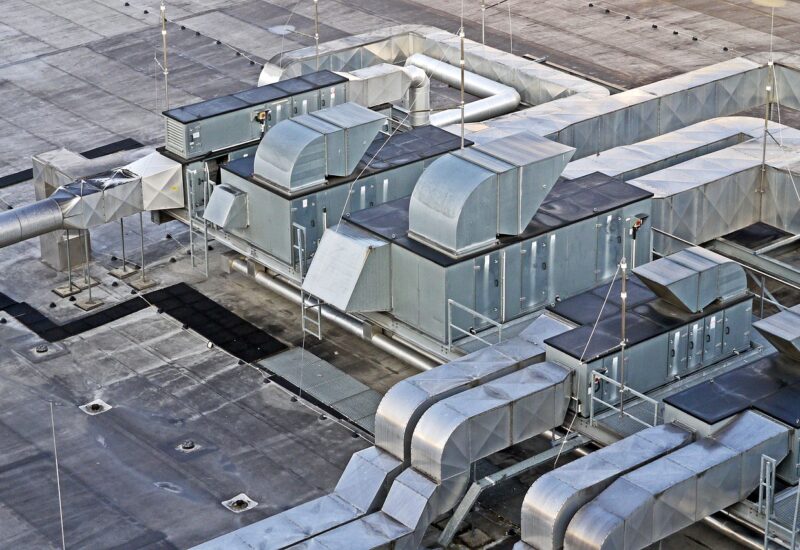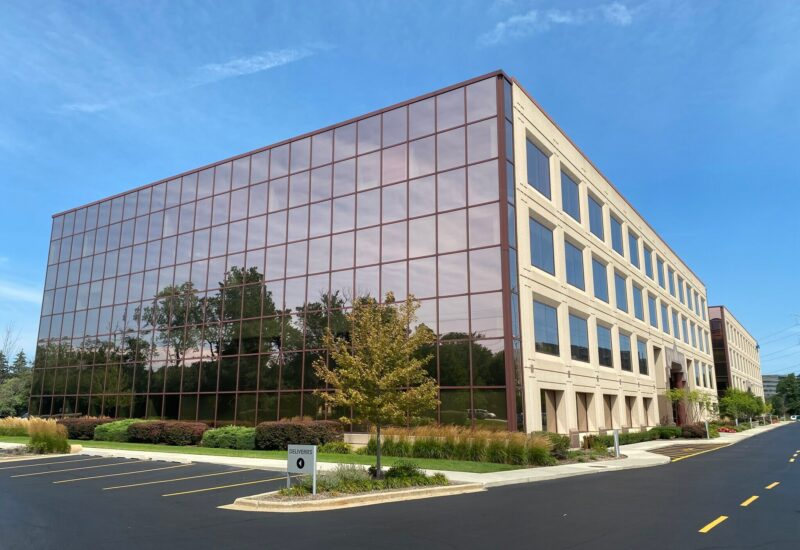The District of Columbia’s proposed rules for implementing the city’s Building Energy Performance Standards (BEPS) that was created by the Clean Energy DC Omnibus Amendment Act of 2018 (CEDC Act) are out for comment. Keep in mind that there will be a 60-day public comment period and revisions may be made before the rules are finalized. We highly recommend to all professionals in the real estate industry, especially owners, developers, and facility management, review the proposed rules, which can be accessed through this link. The following is a summary of Baumann’s initial takeaways on what the rules will mean assuming that they move forward as proposed.
Which Buildings are Affected?
The proposed rules show that the first BEPS cycle will begin January 1, 2021, for all privately-owned buildings with at least 50,000 sq. ft. of gross floor area and all District-owned buildings with at least 10,000 sq. ft. of gross floor area. So, as of January 1, 2021, if your building does not meet the energy performance standard set by the District’s Department of Energy and Environment (DOEE), you will have five years to comply by following a compliance pathway (see below for more). The second cycle will begin on January 1, 2027.

Fines for Non-Compliance
Not responding to BEPS could be costly. The proposed alternative compliance penalties (i.e., fines for not complying) are potentially huge. Buildings over 500,000 sq. ft. can be fined up to $7,500,000 and buildings between 50,000 and 100,000 sq. ft. could face fines of up to $1,000,000. Large fines were expected because the intent of the law is to reduce energy use and not collect revenues. With maximum fines like these, if finalized, it will be advisable for owners of buildings that do not comply with BEPS to take steps that will reduce energy use in significant ways.
We are happy to see that it is proposed that buildings that make an effort but perhaps fall short will be able to get partial credit. For example, if you achieve 60% of what is required for the compliance pathway that you select, your maximum potential fine would be reduced by 60% (maximum fine drops from $1,000,000 to $400,000 for a 50,000 sq. ft. building).
Exemptions
Under some circumstances, building owners may be granted a delay of compliance or an exemption from compliance. These will be made on a case-by-case basis and determined by DOEE. Exemptions may be granted for a building that is completely demolished prior to the beginning of the applicable compliance cycle or that is demolished during the compliance cycle. For granting a delay in compliance, some potential “good causes” are: financial distress; a change of ownership of the property during a compliance cycle; the building undergoing a major renovation; the building becoming unoccupied; the building pending demolition; or there is a change in primary property type. Compliance delays will be granted in one-year increments with a maximum of three years of delay allowed.
BEPS and COVID-19
Regarding compliance and COVID-19, the rules propose that buildings operating (i.e., using energy) in March 2020, may be granted a delay in compliance. We expect this to be a one-year delay that is applied to most buildings in the first compliance cycle, but the proposed rules appear to leave this open to be extended.
Compliance Pathways
With respect to compliance, besides the alternative compliance penalties, the proposed rules spell out four compliance pathways:
1) Performance pathway- reducing building site energy use by 20% over the five-year compliance cycle
2) Standard target pathway- bringing a building’s energy performance up to the level established as the performance standard for the applicable BEPS period in the last year of the compliance cycle
3) Prescriptive pathway- meeting reporting milestones and implementing one or more DOEE pre-determined energy efficiency measures
4) Alternative performance pathway- completing actions designed to meet or exceed performance pathway requirements that are agreed to between building owners and DOEE
Conclusion
The proposed rules show just how serious DC is about cutting building energy use in its pursuit of becoming carbon neutral by mid-century. Building owners must take note and make energy performance a central topic of planning and action going forward. In the coming days, we will expand upon the compliance pathway options and give you some food for thought regarding how BEPS will impact the DC building market.
Want to Comment?
Comments on the rules are made in writing not later than sixty (60) days after publication of this notice in the D.C. Register. Comments should be clearly marked “Public Comments: BEPS” and filed with DOEE, Benchmarking, 1200 First Street, N.E., 5th Floor, Washington, DC 20002, Attention: Building Performance and Enforcement Branch, or e-mailed to info.BEPS@dc.gov. All comments will be treated as public documents and will be made available for public viewing on the Department’s website.







